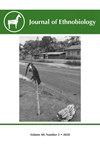跳出大陆、跳出框框思考:跨大陆比较研究可以丰富前哥伦布时期农田农业研究
IF 1.3
3区 社会学
Q1 ANTHROPOLOGY
引用次数: 1
摘要
摘要尽管Denevan和Turner(1974)在近50年前尝试了洲际合成,但对新热带地区、非洲和新几内亚的农业饲养场(RF)的研究是独立的研究传统,它们之间几乎没有交流。新热带研究指的是“高地农业”,几乎完全涉及湿地的考古系统。非洲和新几内亚的研究涉及“土丘”或“山脊”种植,主要涉及高地和湿地的现代系统(在非洲)或现代和考古系统(在新几内亚)。对当今系统的民族志研究提供了对过去系统的问题的见解,而这些问题仅靠考古方法是无法解决的。我们的评论表明,新热带地区对RF农业的关注仅仅是湿地适应,这是一种误导。我们认为,在湿地和高地环境中,建造RF最广泛的目的是集中表层土和有机物,从而在贫瘠和低生物量的草原环境中创造肥沃的斑块。避免洪水是RF在湿地和湿地边缘建造的一项重要功能。我们进一步表明,旧世界RF通常不是多年生的,而是在景观上旋转的短命结构,在连续的周期中被拆除和重建。通过管理生育率的方法,允许(甚至有利于)短休耕期。最后,我们认为,在所有大陆上,考古开垦地对湿地和湿地边缘环境的限制,在一定程度上是因为它们在湿地中比在高地环境中更好地免受侵蚀。本文章由计算机程序翻译,如有差异,请以英文原文为准。
Thinking Outside the Continent and Outside the Box: Cross-Continental Comparative Studies Can Enrich Studies of Pre-Columbian Raised-Field Agriculture
Abstract. Despite an attempt at intercontinental synthesis by Denevan and Turner (1974) almost 50 years ago, studies of agricultural raised fields (RF) in the Neotropics and in Africa and New Guinea are separate research traditions, with almost no communication between them. Neotropical studies refer to “raised-field agriculture” and almost exclusively concern archaeological systems in wetlands. Studies in Africa and New Guinea refer to “mound” or “ridge” cultivation and concern mostly present-day systems (in Africa) or both present-day and archaeological systems (in New Guinea) in both uplands and wetlands. Ethnographic studies of present-day systems provide insights into questions about past systems that are inaccessible using archaeological methods alone. Our review suggests that the Neotropical focus on RF agriculture as an exclusively wetland adaptation is misleading. We argue that the most widespread purpose of building RF, in both wetland and upland environments, is to concentrate topsoil and organic matter, enabling creation of fertile patches in infertile and low-biomass grassland environments. Avoiding flooding is an important function of RF built in wetlands and wetland margins. We further show that Old World RF are often not perennial, but are short-lived structures that rotate over the landscape, being torn down and rebuilt nearby in successive cycles. Short fallow periods are allowed (or even favored) by methods of managing fertility. Finally, we argue that the restriction—on all continents—of archaeological raised fields to wetland and wetland-margin environments is, in part, a result of their better preservation from erosion in wetland than in upland environments.
求助全文
通过发布文献求助,成功后即可免费获取论文全文。
去求助
来源期刊

Journal of Ethnobiology
Social Sciences-Anthropology
CiteScore
4.80
自引率
3.40%
发文量
21
审稿时长
>12 weeks
期刊介绍:
JoE’s readership is as wide and diverse as ethnobiology itself, with readers spanning from both the natural and social sciences. Not surprisingly, a glance at the papers published in the Journal reveals the depth and breadth of topics, extending from studies in archaeology and the origins of agriculture, to folk classification systems, to food composition, plants, birds, mammals, fungi and everything in between.
Research areas published in JoE include but are not limited to neo- and paleo-ethnobiology, zooarchaeology, ethnobotany, ethnozoology, ethnopharmacology, ethnoecology, linguistic ethnobiology, human paleoecology, and many other related fields of study within anthropology and biology, such as taxonomy, conservation biology, ethnography, political ecology, and cognitive and cultural anthropology.
JoE does not limit itself to a single perspective, approach or discipline, but seeks to represent the full spectrum and wide diversity of the field of ethnobiology, including cognitive, symbolic, linguistic, ecological, and economic aspects of human interactions with our living world. Articles that significantly advance ethnobiological theory and/or methodology are particularly welcome, as well as studies bridging across disciplines and knowledge systems. JoE does not publish uncontextualized data such as species lists; appropriate submissions must elaborate on the ethnobiological context of findings.
 求助内容:
求助内容: 应助结果提醒方式:
应助结果提醒方式:


